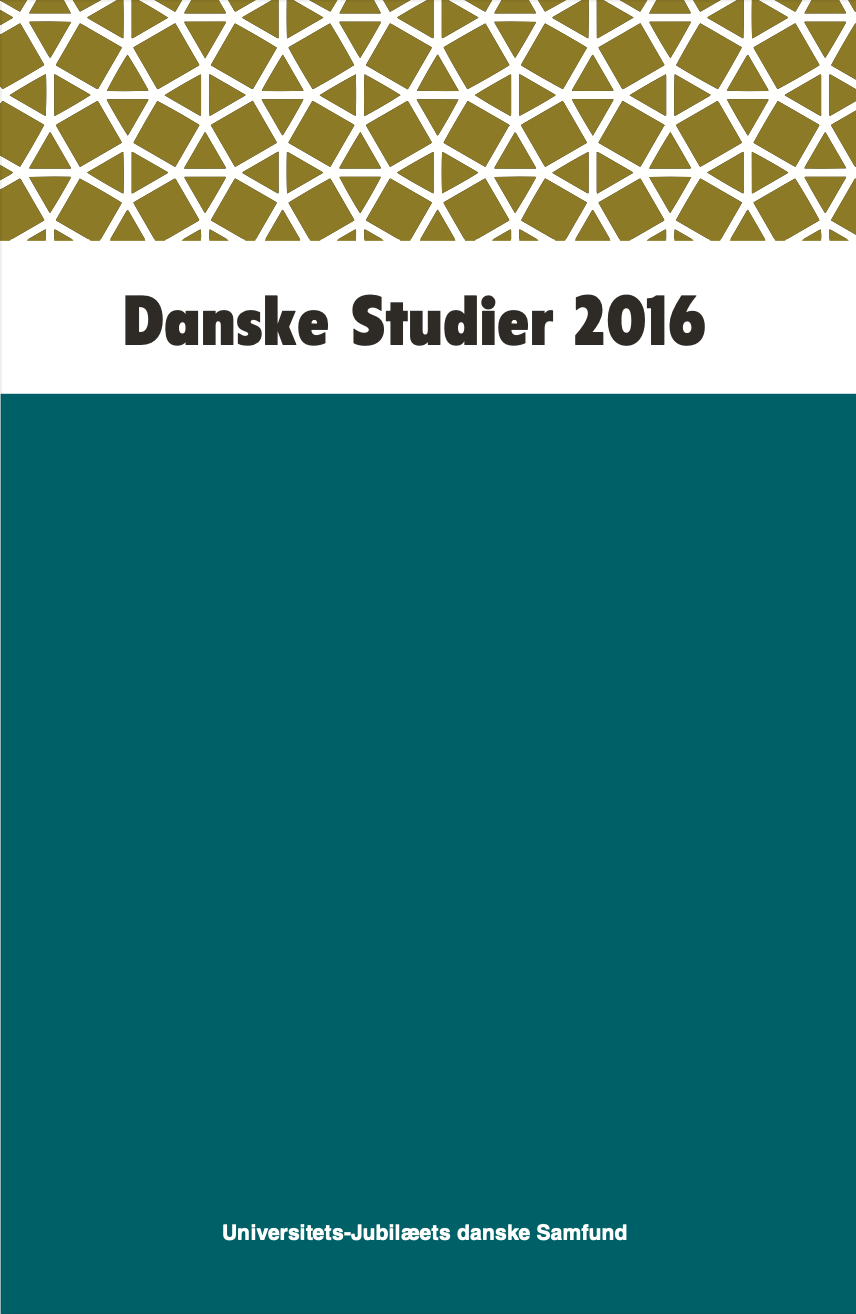Body »writing« and soul »speech«
Hans Christian Andersen’s Improvisatoren
Keywords:
H.C. AndersenAbstract
This article deals with H.C. Andersen’s Improvisatoren from one particular point of view, namely, the question of the correlation, in Andersen’s approach to art and life, of the written and the spoken word, of body and soul. The artist protagonist, Antonio, whose fame rests on his verbal improvisations, shuns the written word as a form of communication for much of the novel, just as he takes but slow and tentative steps to admitting a physical dimension to his purely spiritual notion of love. On this interpretation, life and art coalesce in the novel’s unexpected and much-debated closing tableau of an idyllic family unit, and we are faced with a new dimension in both the speech-writing, and the soul-body relationship. The only piece of concrete information that Andersen gives us is that the hero, Antonio, gives up his practice of verbal improvisation concurrently with embarking on married life. Indeed, the very act of writing his autobiography is a step into the world of the written word, and throughout the novel, as a background to the growing success of his verbal improvisations, we get hints of the works he is planning, or trying, to write. It seems, therefore, that Antonio’s professional life runs parallel to that of Andersen himself, who, for all his attraction to improvisation, had to come to realize that much as his story-telling enchanted his live audience, his tales had a chance of surviving, once death had sealed his lips, only if they were recorded in the form of the written word.
References
Andersen, H.C. (2004). Improvisatoren. København: Forlaget Borgen.
De Mylius, J. (1981). Myte og Roman. H.C. Andersens romaner mellem romantik og realisme. København: Gyldendal
Derrida, J. (1967). De la grammatologie. Paris: Les Éditions de Minuit. Ferguson, G. (1961). Sign and Symbols in Christian Art. New York: Oxford University Press.
Heede, D. (2005). Hjertebrødre: Krigen om H.C. Andersens seksualitet. Odense: Syddansk Universitetsforlag.
Kofoed, N. (1967). Studier i H.C. Andersens fortællekunst. København: Forlaget Munksgaard.
Möller-Christensen, I.Y. (1992). Den gyldne trekant. H.C. Andersens gennembrud i Tyskland 1831-1850. Odense: Odense Universitetsforlag.
Møller Kristensen, S. (1966). Den dobbelte Eros. Studier i den danske romantik. København: Gyldendal.
Sanders, K. (1997). Konturer: Skulptur- og dødsbilleder fra guldalderlitteraturen. København: Museum Tusculanum Press.
Downloads
Published
How to Cite
Issue
Section
License

This work is licensed under a Creative Commons Attribution-NonCommercial-ShareAlike 4.0 International License.
Artikler offentliggjort fra 1/1 2021 er omfattet af CC BY-NC-ND-Licens.
Artikler publiceret i Danske Studier før 1/1 2021 er underlagt dansk ophavsret. Det betyder at man må citere, downloade og linke til dem via tidsskrift.dk. Genudgivelse af artiklerne kræver en aftale med redaktionen som også ejer ophavsretten.





